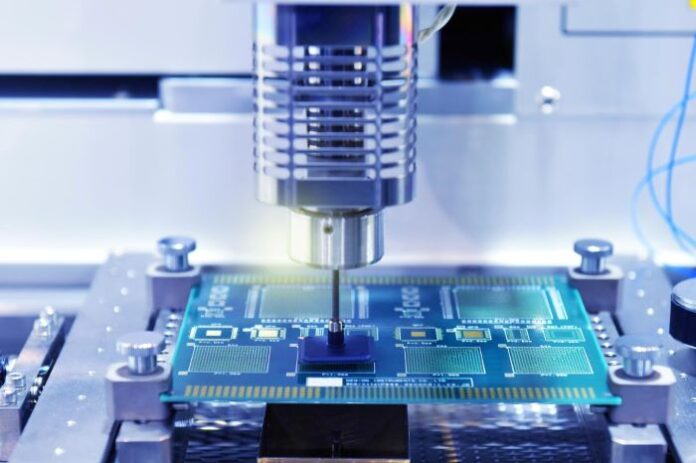X-ray technology has long transcended its iconic role in medical diagnostics. In the realm of industry, it serves as a formidable ally, enabling a diverse array of applications that are nothing short of transformative. X-ray techniques have emerged as invaluable tools for quality control, non-destructive testing (NDT), material analysis, and precision measurement across multiple sectors. Their ability to peer inside solid structures and materials, uncovering imperfections, assessing composition, and ensuring precision, has revolutionized the way industries operate.
In this article, we will delve into the world of X-ray techniques in industrial applications, shedding light on their significance and the pivotal role they play in ensuring efficiency, safety, and reliability across various sectors.
So, let us get started!
X-Ray Basics in Industry
In the industrial sphere, X-rays are more than a medical marvel; they are a fundamental tool with multifaceted utility. Let us learn more about them.
Why are X-rays Used in Industrial Settings?
- Penetrating Power: X-rays possess the unparalleled ability to penetrate solid materials, making them indispensable for inspecting the internal structure of components, welds, and products.
- Defect Detection: Their high-energy nature allows X-rays to reveal minuscule defects like cracks, voids, or inclusions that might compromise structural integrity.
Advantages of Using X-rays in Industry
- Non-Destructive Nature: X-ray techniques are non-destructive, ensuring that the examined items remain intact and operational after inspection.
- Precision and Accuracy: They provide precise, high-resolution images, facilitating accurate assessment and quality control in manufacturing processes.
- Efficiency and Safety: X-rays streamline inspection processes, improving efficiency while reducing the need for costly and potentially hazardous physical dismantling.
Common Industrial Applications of X-Ray Techniques
X-ray technology extends its influence far beyond medical diagnostics. In industrial domains, it serves as a versatile and indispensable tool, driving critical processes and ensuring product quality and safety.
Let us discuss the most common applications of X-ray techniques in industry.
Non-Destructive Testing (NDT)
Non-destructive testing (NDT) is a cornerstone of industrial quality control. X-ray techniques play a pivotal role in NDT by allowing inspectors to assess the integrity of materials and structures without causing harm.
X-rays can unveil hidden flaws such as cracks, voids, or inclusions in welds, pipelines, and manufactured components, ensuring they meet rigorous safety and quality standards.
Quality Control and Inspection
X-ray inspection is a linchpin in manufacturing industries like automotive and aerospace. It is suitable for automotive electronic systems, aiding in efficient energy utilization. X-ray inspection is crucial for detecting manufacturing defects, such as porosities in castings or foreign objects in packaged goods, safeguarding the production of flawless products.
Material Analysis
X-ray techniques are invaluable for material analysis. They reveal the elemental composition and distribution in substances, essential in industries such as pharmaceuticals and electronics… especially the ones that use intricate circuits.
Metrology and Precision Measurement
X-ray metrology ensures precision measurement in industries where accuracy is paramount. This technique facilitates the assessment of critical dimensions and tolerances in intricate components.
Advanced X-Ray Techniques in Industrial Applications
In the realm of industrial applications, X-ray technology continues to evolve, giving rise to advanced techniques that extend its capabilities far beyond traditional radiography.
These sophisticated methods, such as Computed Tomography (CT) scanning, X-ray Fluorescence (XRF) spectroscopy, and X-ray Diffraction (XRD), have become essential tools for industries seeking precision, analysis, and innovation.
Let us discuss each of these.
Computed Tomography (CT) Scanning
CT scanning, often associated with medical diagnosis, is making significant strides in industry. It provides a three-dimensional view of the internal structure of objects, allowing for a detailed examination of complex components.
In manufacturing, CT scanning is instrumental in detecting hidden defects, ensuring the integrity of intricate assemblies and optimizing design and production processes. Its ability to visualize both external and internal features with exceptional clarity makes it invaluable in sectors like aerospace and automotive manufacturing.
X-ray Fluorescence (XRF) Spectroscopy
XRF spectroscopy is a powerful technique for elemental analysis. In industry, it’s used to determine the elemental composition of materials quickly and accurately. By irradiating a sample with X-rays, XRF measures the characteristic X-ray emissions produced, revealing the presence and quantity of specific elements.
This method finds extensive use in quality control such as in VCOs (Voltage Controlled Oscillators), mining, metallurgy, and environmental monitoring, enabling precise material characterization and compliance with regulatory standards.
X-ray Diffraction (XRD)
X-ray diffraction is pivotal in examining the crystalline structure of materials. In industrial research and development, it aids in understanding the properties and performance of various materials, from metals to pharmaceuticals.
XRD enables scientists to determine crystal phases, grain size, and lattice parameters, providing critical insights into the characteristics and behavior of materials under different conditions.
Industries like electronics, aerospace, and materials science heavily rely on XRD for materials characterization and innovation.
Safety and Regulations
Ensuring safety in the use of X-ray techniques within industrial settings is paramount. Stringent regulations and guidelines are in place to safeguard both personnel and the environment from potential risks associated with ionizing radiation.
Compliance with Regulatory Standards
Industrial X-ray systems must comply with regulatory standards set forth by agencies such as the International Atomic Energy Agency (IAEA), the U.S. Nuclear Regulatory Commission (NRC), and local governmental bodies.
These standards outline permissible radiation levels, safety protocols, and mandatory inspections to maintain safety.
Radiation Safety Protocols
Industrial facilities must implement rigorous radiation safety protocols, including controlled access zones, protective shielding, and radiation monitoring equipment. Personnel handling X-ray equipment receive specialized training to minimize exposure risks.
Environmental Impact Considerations
Industrial X-ray facilities must consider environmental impact. Proper disposal of radioactive materials and responsible management of waste ensure minimal ecological harm.
X-Ray Techniques
In conclusion, X-ray techniques have evolved into indispensable tools for a myriad of industrial applications. From ensuring structural integrity through non-destructive testing to enabling precise measurements and material analysis, their versatility has revolutionized industries worldwide.
The advent of advanced methods like CT scanning, XRF spectroscopy, and XRD has elevated the precision and scope of X-ray technology. While safety and regulations remain paramount, the continued advancement of X-ray techniques promises to drive innovation and quality across various industrial sectors.
We hope it was an informative read!















